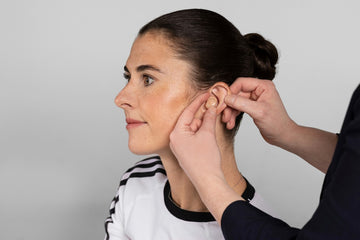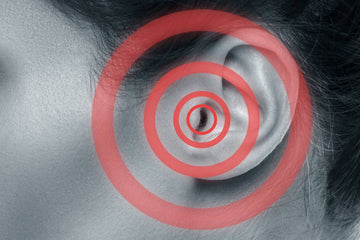How to Program Hearing Aids: What You Need to Know
by Hear Clear on Sep 23, 2024

Have you ever wondered about the magic behind those tiny devices that help millions hear better? Well, it's not magic at all - it's science and technology, expertly combined through a process called hearing aid programming. If you're curious about what goes on behind the scenes when fitting a hearing aid, you've come to the right place. Let's unpack the world of hearing aid programming together.
What Is Hearing Aid Programming?
Hearing aid programming is the process of fine-tuning a hearing device to match an individual's specific hearing needs. It's like tailoring a suit, but instead of fabric, we're working with sound frequencies and amplification levels. This customisation ensures that each user gets the most out of their device, whether they're trying to follow a conversation in a noisy pub or enjoy a quiet evening at home.
Why Proper Programming Is Essential
Imagine wearing a pair of shoes that don't quite fit—uncomfortable, right? The same principle applies to hearing aids. Without proper programming, even the most advanced hearing aid might not provide the optimal listening experience. Correct programming helps reduce feedback, enhances speech clarity, and ensures comfort in various sound environments. It's the difference between simply amplifying sound and truly enhancing your hearing experience.
Preparation for Programming
Gather Necessary Equipment
Before diving into the programming process, it's essential to have all the right tools at hand. This typically includes:
Initial Hearing Assessment
The foundation of effective programming is a thorough hearing assessment. This evaluation helps determine the type and degree of hearing loss, which in turn guides the programming process. It's not just about how loud sounds need to be, but also which frequencies need amplification and how the brain processes different sounds.
Steps to Program Hearing Aids

Step 1: Connect the Hearing Aids to the Computer
The first step in the programming process involves connecting the hearing aids to a computer using a special programming interface. This connection allows the audiologist to communicate with the devices and make necessary adjustments. If you're interested in invisible hearing aids, you'll find that even these discreet devices can be programmed with precision.
Step 2: Access the Programming Software
Each hearing aid manufacturer provides proprietary software for programming their devices. This software serves as the control centre, allowing for fine-tuned adjustments to various parameters.
Step 3: Input Hearing Test Data
The audiologist inputs the results from your hearing test into the software. This data serves as the starting point for programming, providing a baseline for the hearing aid's settings.
Step 4: Adjust Settings and Customize Features
This is where the real magic happens. The audiologist adjusts various settings to optimise the hearing aid's performance. These adjustments might include:
Step 5: Test and Fine-Tune
After the initial programming, it's time to put the hearing aids to the test. The audiologist will run through various listening scenarios to ensure the settings are appropriate. This might involve listening to different types of speech, music, or environmental sounds. Based on your feedback, further fine-tuning can be done on the spot.
Ensuring Long-Term Effectiveness
Regular Maintenance and Cleaning
To keep your hearing aids performing at their best, regular maintenance is key. This includes daily cleaning and periodic professional check-ups. A well-maintained device not only lasts longer but also ensures consistent performance.
Periodic Reprogramming and Adjustments
Your hearing needs may change over time, and your hearing aids should adapt accordingly. Periodic reprogramming sessions allow for adjustments that keep pace with these changes, ensuring your devices continue to meet your needs.
Battery Care and Replacement
Understanding how to care for your hearing aid batteries is crucial for uninterrupted performance. Our hearing aids battery guide provides valuable insights into maximising battery life and knowing when it's time for a replacement.
Professional Support and Troubleshooting
While modern hearing aids are quite user-friendly, there may be times when you need professional support. Whether it's troubleshooting an issue or seeking advice on new features, don't hesitate to reach out to hearing care professionals.
Final Thoughts
Programming hearing aids is a blend of science, technology, and personalised care. It's a process that transforms a sophisticated piece of technology into a life-changing device tailored just for you. While the technicalities might seem complex, the goal is simple: to help you hear better and live life to the fullest.
At our online store, we're committed to guiding you through every step of your hearing journey, from selecting the right device to ensuring it's programmed to perfection. Remember, a well-programmed hearing aid is not just about amplifying sound—it's about reconnecting you to the world of sound in all its richness and complexity.
Ready to take the next step in your hearing health journey? Explore our range of hearing aids and discover how the right device, expertly programmed, can transform your listening experience. Your world of better hearing is just a click away!




